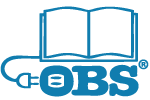The release of the iPad Mini as a dedicated e-reader device suggests that e-readers are following a technology trend set by laptops and cell phones: the smaller, the better. At the same time, legibility on an e-reader screen is instrumental to its functionality. With the iPad Mini, Apple is delicately toeing the line of streamlined technology and the practicality of reading a book on a small screen.
At this year’s Frankfurt Book Fair, we discovered that not only are reading devices following this trend – so is the content they service. By leveraging Global Product Classification (GPC) codes, technology vendors are now able to sell small chunks of content which are related to physical products. For example, a handyman purchasing grout in a hardware store could scan the grout’s GPC code with his smartphone, and be presented with the option to purchase a chapter from a how-to book on best practices for grouting your bathroom. He would be purchasing a single chapter, not the whole book – a sale of perhaps $0.50 – and it would automatically be downloaded to the device with which he scanned the GPC code.
The ease with which a publisher’s content can be made available on such a granular level is dependent upon the XML tags behind it – if the how-to book is tagged correctly, it can easily be chunked and sold as individual chapters or sections. As users consume content in smaller pieces on the go, this backend tagging is crucial to a publisher’s success.
